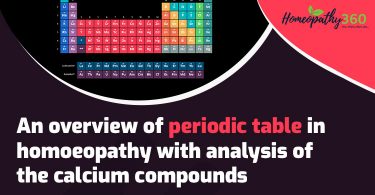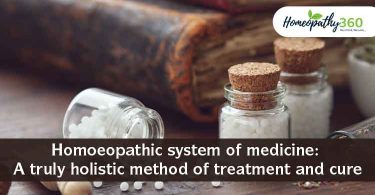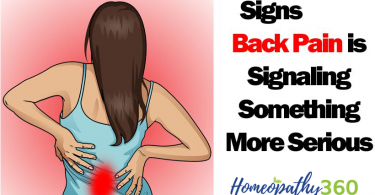
Abstract
The following article describes about hypertension, increasing at a very fast pace nowadays. Different repertories are being used like Murphy’s Repertory, Synthesis Repertory, etc with its general as well as homoeopathic management. This can be controlled by homoeopathic medicine like Crataegus oxyacantha, Lachesis mutus, Baryta carbonica, Rauwolfia serpentina, etc.
Keywords
Hypertension, homoeopathy, high blood pressure, Rauwolfia serpentina, Scutellaria laterifolia.
Abbbreviations
WHO – world health organization.
Introduction
Hypertension is known as a “silent killer” since most of the people suffering from hypertension is usually unaware of the problem because it may present no warning signs or symptoms. For this reason, it is essential that blood pressure should be measured regularly. Hypertension is defined as high blood pressure the (force exerted by circulating blood against the walls of the body’s arteries, the major blood vessels in the body). Blood pressure is measured as systolic and diastolic. The systolic represents the pressure in blood vessels when the heart contracts or beats whereas the diastolic represents the pressure in the vessels when the heart rests between beats. Hypertension is diagnosed if, when it is measured on two different days, the systolic blood pressure readings on both days is ≥140 mmHg and/or the diastolic blood pressure readings on both days is ≥90 mmHg. [1]
Methodology
The data related to this article was being collected from the source books of the authors like William Boericke, JH Clarke,Robin Murphy, as well as Guidelines of hypertensions by WHO, etc.
Risk factors
- Modifiable risk factors
- Unhealthy diets (excessive salt consumption, a diet high in saturated fat and trans fats, low intake of fruits and vegetables),
- Physical inactivity,
- Consumption of tobacco and alcohol,
- Being overweight or obese.
- Non-modifiable risk factors
- A family history of hypertension,
- Age over 65 years,
- Co-existing
diseases such as diabetes or kidney disease. [1]
SYMPTOMS
- Early morning headaches,
- Nosebleeds,
- Irregular heart rhythms,
- Vision changes,
- Buzzing in the ears.
- Severe hypertension can cause fatigue, nausea, vomiting, confusion, anxiety, chest pain, and muscle tremors. [1]
COMPLICATIONS
In case of uncontrolled hypertension, following complications can occur:
- Chest pain, also called angina.
- Heart attack, which occurs when the blood supply to the heart is blocked and heart muscle cells die from lack of oxygen. The longer the blood flow is blocked, the greater the damage to the heart.
- Heart failure, which occurs when the heart cannot pump enough blood and oxygen to other vital body organs.
- Irregular heartbeat which can lead to a sudden death.
- Hypertension can also burst or block arteries that supply blood and oxygen to the brain, causing a stroke.
- Hypertension can cause kidney damage, leading to kidney failure. [1]
Prevention
Reducing hypertension prevents heart attack, stroke, and kidney damage, as well
as other health problems.
- Reducing salt intake (to less than 5 grams daily)
- Eating more fruit and vegetables
- Being physically active on a regular basis
- Avoiding use of tobacco
- Reducing alcohol consumption
- Limiting the intake of foods high in saturated fats
- Eliminating/reducing trans fats in diet.[1]
Management
- Reducing and managing mental stress
- Regularly checking blood pressure
- Treating high blood pressure
- Managing other medical conditions.[1]
Repertorial approach according to different repertories
- Synthesis Repertory [2] –
- GENERALS- HYPERTENSION –
- CON, VERAT.
- Am-m, Ambr, Aur, Bar-c, Bry, Ferr, Op, Plb, Rauwolf, Sec, Stront, Stront-i, Visc.
- Accompanied by – heart – Crataegus
- Sudden – Adren, Coff, Lat-m.
- Murphy’s Repertory [3] –
- CLINICAL- HYPERTENSION –
- Crataegus, Lach
- Aml-n, Aur, Glon, Nat-m, Nux-v, Verat
- Heart disease with – Crat, Lach
- Sudden rise of- Adren, Coff, Glon.
- Phatak Repertory [4]–
- HYPERTENSION (BLOOD PRESSURE – HIGH) –
- Aur, Bar-c, Bar-m, Coff, Con, Crat, Glon, Iod, Lycps,
Stront, Tab, Uran, Verat-v, Visc.
- Sudden rise of – Coff.
- Complete Repertory [5]–
- CLINICAL – HYPERTENSION
- Arg-n, Aur , Bar-c, Cact, Calc, Caust, Crat, Ign, Kali-c, Kali-chl, Lyc, Nat-m, Phos-ac, Phos, Plum, Psor, Puls, Rad, Rauw, Sec-c, Sep, Sil, Stront, Stront-i, Sumb, Thuja.
Some commonly prescribed medicines for hypertension
- GLONOINUM– Excessive throbbing of heart, pulse beats rapidly with increasing force and frequency; throbbing in the vessels of neck, pulsating headache in forehead and temples, agg. when stooping which causes stitching pain of great violence in cardiac region; laborious action of heart, oppression, frequent pulse; blood seems to rush to heart and mount rapidly to head; alternate congestion to heart and head; severe stitches from heart extending into back, between shoulders; purring noise in cardiac region when lying, pulse intermittent, must have head high; agg. lying on left side, amel. on right side, blending of first and second sound, so that they cannot be distinguished; restlessness in limbs, relieved by walking.
- BELLADONNA– Violent palpitation, prolonged echoing sound in head with laboured breath. Palpitation from least exertion. Throbbing all through the body. Skin flushed and hot. Anxiety or fear; no thirst. Vertigo with falling on the left side or backward. Worse from touch, noise, jar and lying down.
- RAUWOLFIA SERPENTINA– High blood pressure without marked atheromatous changes in the vessels. It also acts as a sedative.
- CRATAEGUS OXYACANTHA – Pain in region of heart and under left clavicle. Heart muscles seem flabby, worn out. Heart dilated; first sound weak. Pulse accelerated, irregular, feeble, and intermittent. Valvular murmurs. Cutaneous chilliness, blueness of fingers and toes; all aggravated by exertion or excitement. Faintness and collapse. Heart failure in hypertrophy and valvular disease [7].
- CONIUM MACULATUM – Anxious sensation with rapid action of the heart. Pressure at times in the praecordial region, as if the heart would be pressed down, with oppressed breathing (third day). Dull stitches above the heart on deep inspiration, although also soon afterwards on every motion of the body. Flying stitches and tearings, at one time in the cardiac region, at another in the hands, head, and legs. Palpitation on rising, after a stool, with intermissions in the beats of the heart, and after drinking.
- VERATRUM ALBUM – Violent palpitation of heart, which pushes out the ribs, with choking, and severe fits of anxiety in praecordium. Pulse slow, almost lost. Great activity of arterial system. The blood runs like cold water through the veins.
- STRONTIUM CARBONICUM– High blood pressure with flushed face pulsating arteries, threatened apoplexy.
- STROPHANTHUS HISPIDUS– It is a muscle poison; it increases the contractile power of all stiped muscles. Acts on the heart, increasing the systole and diminishes the rapidity. May be used with advantage to tone the heart and run off dropsical accumulations. In small doses for weak heart, it feels enlarged. In mitral regurgitation, where oedema and dropsy have supervened.
- VIPERA BERUS- violent pain in chest with Chilliness, bloating up of chest, with difficulty of breathing, violent congestion to heart, he tears his clothing open, with excessive sensation of sickness in abdomen, anguish about heart, numbness and lameness of upper extremities.
- SCUTELLARIA LATERIFOLIA- Irregular action of the heart, from derangement of the cardiac plexus, tremulousness and twitching of the cardiac muscels, oppression of the chest with a sticking pain on cardiac region, sensation of throbbing about the heart with flushed face.
- MURIATICUM ACIDUM– Palpitation of heart felt in face; stitches in heart; tension and pain on sternum; agg. When taking a long breath and on motion; pulse slow and weak, sometimes intermitting; slow during day, more frequent at night.
- BARYTA MURIATICUM– Arteriosclerosis and cerebral affection in the aged. Vertigo and noises in the ears. Increased tension of pulse. Icy cold body with paralysis. Thickening of arteries and bronchial affection in old persons.
- LACHESIS MUTUS– It is the head remedy for high blood pressure. The patient is worse on waking. Sleep into an aggravation. Restlessness. Cannot bear tight clothes, wants to loosen them.
- ADRENALINUM– High arterial blood pressure. Roaring in the ears due to high blood pressure.
Conclusion
In modern world, hypertension is becoming very serious problem day- to-day due to sedentary lifestyle and mental stress. Hypertension is not an incurable disease but can be treated and controlled by some changes in dietary habits and modified lifestyle, along with homoeopathic medicine. Homoeopathic medicines give great results in the cases of hypertension by using clinical repertories and finding simillimum with the help of Materia medica. Scaling up protocol-based management, improving access to medicines and technologies, and better measuring outcomes, will surely lead to another level of success.
References
- WHO. Hypertension [internet].13 September 2019.Available at: https://www.who.int/news-room/fact-sheets/detail/hypertension-ACCESSED ON 5/03/2020
- Schroyens F. Augmented Clinical Synthesis. 9.1 ed. New Delhi: B. Jain Publishers (P) Ltd; 2005.
- Murphy R. Homeopathic Medical Repertory. Third Revised Edition. Noida: B. Jain Publishers (P) Ltd; 2016.
- Phatak S.R..A Concise Repertory of Homoeopathic Medicines. 4th ed. New Delhi: B. Jain Publishers (P) Ltd; 2009.
- Zandvoort R. Complete Repertory. 2019.
- Allen H.C. Allen’s keynotes rearranged and classified with the leading remedies of Materia medica and bowel nodoses. New Delhi: Indian Books & Periodicals Publishers; 2010.
- Clarke JH, A Dictionary of Practical Materia Medica Volume I, II, III. New Delhi: B. Jain Publishers (P). Ltd.; 1995.
- Boericke W. New manual of Homoeopathic Materia Medica and repertory. 9th ed. New Delhi: B. Jain Publishers (P) Ltd; 2011.
- Lilienthal S. Homoeopathic Therapeutics. New Delhi: B.Jain Publishers Pvt. Ltd.; 2008.
About the authors
- Dr Ayushi Malhotra, MD Scholar, Dept of Materia Medica, Dr. M.P.K Homoeopathic Medical College, Homoeopathy University, Jaipur.
- Dr Yogyata, MD Scholar, Dept of Repertory, Dr. M.P.K Homoeopathic Medical College, Homoeopathy University, Jaipur.





